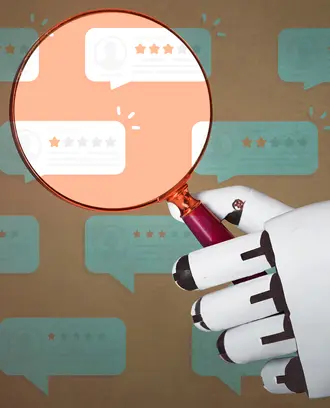Credit: Boyloso / Shutterstock
3 ways retail stores can survive — and maybe even grow — against the odds
The COVID-19 pandemic came as retail stores were experiencing a slight revival after years of falling behind to e-commerce. Shoppers were returning, though profits were still elusive.
Then the pandemic forced stores to close, sending many struggling companies over the edge. Through mid-August, 29 retail companies had filed for bankruptcy protection, including notable brands like J.C. Penney and Neiman Marcus. In the same time period, retailers announced the closure of more than 10,000 stores, and one tracking company said 20,000 to 25,000 stores could close by the end of the year. The holiday shopping forecast is so unpredictable that some forecasters aren’t making predications.
As even more customers grow accustomed to shopping online, retailers will need to be smarter than ever about strategies for brick-and-mortar stores. The future of most business is still online, and retailers trying to bring customers back to stores should still pursue an omnichannel mix, according toa senior lecturer in marketing at MIT Sloan.
According to experts, the best path forward for brick-and-mortar stores is focusing on the customer experience, avoiding discounts as a main strategy, and designing smart loyalty programs that show your company knows its customers (and will help you get to know them even better).
“Yes, you need to survive today,” Chatterjee said in a recent webinar sponsored by the MIT Industrial Liaison Program. “But have a plan for the long term that focuses on customer experience.”
Here are three ways companies can help stores succeed against the odds.
Know what makes people shop in stores
A recent, pre-pandemic study showed that 56% of millennials shop in a brick-and-mortar store once a week, more than baby boomers or Gen Xers. Reasons included instant gratification from taking something home, enjoyment from browsing, seeing and trying on products, and asking sales staff for advice. These are all sensory elements, Chatterjee noted — the “touch and feel” experience that isn’t available online.
Companies should build the in-store experience around what draws people in, Chatterjee said — studies show strong links between customer experience, brand trust, and performance.
Chatterjee outlined the “three Rs” of customer experience:
-
Relevance: laser focus on relevant customer experience elements. Last fall, Nordstrom opened a new store in New York City that is focused on customer services like tailoring and personal styling.
- Resources: allocate resources, like time, money, and human capital, towards customer experience. Macy’s increased staffing and improved carpeting, lighting, and dressing rooms at hundreds of high-performing stores, with those stores seeing boosts in sales.
- Relationships. Establish and strengthen customer relationships for the store to succeed in the long term. For example, Best Buy emphasizes employee training, with sales staff required to demonstrate product knowledge before they interact with customers.
Use nudges, winks, and smiles to build smart rewards programs
Retailers should proactively use data and technology to create “shopper journeys” and programs that are beneficial to both the consumer and the company, according to Michael Schrage, a visiting scholar at the MIT Initiative on the Digital Economy. He urged companies to think rigorously and explicitly about designing “choice architecture” that creates “better moments for better shoppers.”
As of mid-August, 29 retail companies had filed for bankruptcy protection in 2020.
Schrage, who has published research about recommendation engines, digital experimentation, and behavioral economics, suggested what he calls a “moments framework” for retailers, marketers, and customer experience innovators to consider.
Nudges try to alter people's behavior in predictable ways, without forbidding any options or changing their economic incentives, Schrage said. A classic example is “suggested tips” that can automatically print on restaurant receipts, nudging customers to suggest tipping in appropriate amounts. This draws on work by Nobel Prize winner Richard Thaler of the University of Chicago and Cass Sunstein, a Harvard University professor.
Winks are moments that create shared intimacy. “It's about solidarity. It's about a way of connecting with people,” Schrage said. Winks can come in the form of recommendations, like when websites suggest items based on other things you’ve purchased — suggesting that they know you and what you might like.
Smiles are when customers express moments of happiness. These are usually self-evident, Schrage said, and companies should be actively measuring and monitoring those moments. “How are you assessing what makes people smile? That's absolutely key,” he said.
Good rewards programs integrate these three actions, Schrage said, pointing out Starbucks’ rewards program as a successful example. The company doesn’t have a loyalty or promotion program, he emphasized, but a rewards program that awards customers “stars” for purchases or completing so-called challenges, like ordering at a certain time of day, trying a certain item, or buying drinks a number of days in a row. The stars can be redeemed for things like free drinks or merchandise.
“They do an excellent job of orchestrating and offering nudges, winks, and smiles,” Schrage said. “This is a promotion program that integrates and orchestrates all of these moments to deliver a very effective experience … that creates a complement between the digital, and the virtual, and the physical store.”
Schrage said the Starbucks program is superior to many traditional companies’ approaches to digitizing loyalty and promotion. “When I go into most retailers, I don't get the impression that they care about a designed experience,” he said. “They seem more interested in selling to me than helping me. I don’t think that’s sustainable for any healthy relationship.”
Don’t rely on discounting
Just as discounting isn’t the best way to structure a loyalty program, it’s also not the answer for long-term sales success, Chatterjee said. Studies show offering the right items, not low prices, enables growth over the long term. “If you do not have the right things to offer, then price discounting might get you a sale today, but not in the long term,” she said.
In fact, discounts can hurt a company more than help. “One of the paths to self-destruction was relentless discounting, and not appreciating the value of a customer experience,” Schrage said.
Low prices leave a company unable to provide what customers want when they visit stores, Chatterjee said. “They've been killing in-store experience. They cut down on store personnel,” she said. “You went, you waited in the checkout forever, you asked a question of the store personnel, no one was there to answer your questions. The merchandising was not appropriate. So over and over again, they completely destroyed the customer experience.”
While Amazon and online commerce are major threats, several organizations have survived and even thrived amid this competition. “It’s a shopping experience, not just a buying experience,” Schrage said. “Once you start going down the discount path, you've converted the shopper into a procurement officer. Is that really how you want to brand your experience?”
“Nothing is wrong with a good price, don't get me wrong, price is important,” he added. “But if price is the overwhelmingly dominant thing, then you're [beholden] to price points, and not to creating a good user experience.”



